I am sure that you have seen countless commercials about anti-aging cream or cream to get rid of sun spots, but is getting old so bad? What is more, is it something that we can stop? And why are so many of us afraid of it? In the following blog I will discuss why joints pain as we get other, the formation of sun spots, and the change of hair colour and the extra hair in other parts.
So why does the back and other joints hurt as we get older? Between our joints we have a layer of cartilage shaped like disks that keeps them moving smoothly and cushioning when moved. As we get older the cartilage in knees is the first to begin to degrade because of “a lifetime of walking, exercising, and moving.” When this cartilage gets to be such a small amount the bone comes in contact with each other and this causes inflammation of the surrounding tissue. Around “27 million American adults over the age of 25 have osteoarthritis,” and this is the condition that the lack of cartilage causes. Now the reason for the aching of the back is similar but different as well. The vertebrae itself begins to literally degrade. We have 7 cervical 12 thoracic and 5 lumbar vertebrae, and even though the cervical and thoracic are much thinner it is the thicker lumbar that suffer the most. Like the knees the spine has cartilage called disks between them, but, again, just like the knees the lumbar take on most of the weight of the torso. I am not saying that the cervical or thoracic vertebrae are unimportant, but if the lumbar vertebrae is damaged, just walking can take a toll because the spinal cord will not be in the secure potion vital to make walking comfortable.
What is worse than not feeling like yourself is not looking as you did. I am sure you have seen dark spots on the skin of elder adults, these are the effect of years and years of sun exposure. Many older adults have them because it was not until recently it was found out that the sun was the cause of these, before they were called liver spots because it was theorized it was the livers fault for these spots. The reason that these spots are more prevalent in older adults is because, unlike younger humans, the skin is unable to regenerate when exposed to UV rays. But unlike the missing cartilage of the knees or spine, these sun spots present no danger. Although there are some who see these spots as “unsightly” and choose to have them removed “by electrosurgery, laser treatment or cryotherapy.”
Now unlike the pain and sun spots which are new to the body, the change of hair colour to white is actually something we all had. All humans start off with white hair. It is not until “it gets pigment, melanin, through specialized cells called melanocytes.” As the hair grows it is given this special pigment. But why the hair changes colour is still under examination. The most prevalent and likely theory is we are given a set amount of these cells, so as we get older the cells are being used up and with some older adults this is when the hair begins to turn white. Some think that it is caused by stress, this is true, but when there are more than a few strands void of colour it means that the individual is running out of these pigment cells.
On the subject of hair, I am sure that you have noticed your father or grandfather having hair in their ears and nose...but not much on their heads in some cases. The reason for this is because even though they are all hair, they all go through different stages of growth; anagen, catagen, and telogen. The head hair usually stops at the anagen stage but the hair on the arms and legs go to the catagen stage for a few weeks. In this stage the hair grows but then stops at a certain length. When this happens it goes into the telogen stage which means that it “stops lengthening and eventually falls out naturally through shedding or external trauma such as pulling.” As we age, especially males, the exposure to the hormone testosterone can disrupt the predetermined growth period. According to Dr. Sarah Baker from Northwestern University, “testosterone causes hair to grow in the beard, pubic, and underarm area, and it causes hair to shrink on the scalp, which develops into hair loss or hair thinning.” This is why a large percent of older adults who are balding are men, who have a great amount of the hormone testosterone, and not women, who have a small percentage of testosterone but more of the hormone estrogen.
As you can see, there is nothing to be scared about; I know I said that there is nothing worse than not feeling like yourself or looking like yourself, but it is worse when you don't come to terms with it. When we are children we pretend to be “all grown up,” but then when we get there, we realize that we can not stop it. There are countless lotions, pills, dyes to cover up our age, but in actuality, we cannot cope with the fact; we get old. We get wrinkly, we get weak, we lose our hair, and we cannot to anything about it. Eventually we have to come to terms with the fact that we are children, we are adults, and we are the elderly. But there is nothing wrong with that. It is not as if it is only you who will go through it; all humans have and will continue to HAVE go through old age. You need not be afraid of old age, embrace it, enjoy it, and above all...accept it.
Please feel free to comment on what you thought of the blog, or other physical anthropological subjects you would like me to cover.
So why does the back and other joints hurt as we get older? Between our joints we have a layer of cartilage shaped like disks that keeps them moving smoothly and cushioning when moved. As we get older the cartilage in knees is the first to begin to degrade because of “a lifetime of walking, exercising, and moving.” When this cartilage gets to be such a small amount the bone comes in contact with each other and this causes inflammation of the surrounding tissue. Around “27 million American adults over the age of 25 have osteoarthritis,” and this is the condition that the lack of cartilage causes. Now the reason for the aching of the back is similar but different as well. The vertebrae itself begins to literally degrade. We have 7 cervical 12 thoracic and 5 lumbar vertebrae, and even though the cervical and thoracic are much thinner it is the thicker lumbar that suffer the most. Like the knees the spine has cartilage called disks between them, but, again, just like the knees the lumbar take on most of the weight of the torso. I am not saying that the cervical or thoracic vertebrae are unimportant, but if the lumbar vertebrae is damaged, just walking can take a toll because the spinal cord will not be in the secure potion vital to make walking comfortable.
What is worse than not feeling like yourself is not looking as you did. I am sure you have seen dark spots on the skin of elder adults, these are the effect of years and years of sun exposure. Many older adults have them because it was not until recently it was found out that the sun was the cause of these, before they were called liver spots because it was theorized it was the livers fault for these spots. The reason that these spots are more prevalent in older adults is because, unlike younger humans, the skin is unable to regenerate when exposed to UV rays. But unlike the missing cartilage of the knees or spine, these sun spots present no danger. Although there are some who see these spots as “unsightly” and choose to have them removed “by electrosurgery, laser treatment or cryotherapy.”
Now unlike the pain and sun spots which are new to the body, the change of hair colour to white is actually something we all had. All humans start off with white hair. It is not until “it gets pigment, melanin, through specialized cells called melanocytes.” As the hair grows it is given this special pigment. But why the hair changes colour is still under examination. The most prevalent and likely theory is we are given a set amount of these cells, so as we get older the cells are being used up and with some older adults this is when the hair begins to turn white. Some think that it is caused by stress, this is true, but when there are more than a few strands void of colour it means that the individual is running out of these pigment cells.
On the subject of hair, I am sure that you have noticed your father or grandfather having hair in their ears and nose...but not much on their heads in some cases. The reason for this is because even though they are all hair, they all go through different stages of growth; anagen, catagen, and telogen. The head hair usually stops at the anagen stage but the hair on the arms and legs go to the catagen stage for a few weeks. In this stage the hair grows but then stops at a certain length. When this happens it goes into the telogen stage which means that it “stops lengthening and eventually falls out naturally through shedding or external trauma such as pulling.” As we age, especially males, the exposure to the hormone testosterone can disrupt the predetermined growth period. According to Dr. Sarah Baker from Northwestern University, “testosterone causes hair to grow in the beard, pubic, and underarm area, and it causes hair to shrink on the scalp, which develops into hair loss or hair thinning.” This is why a large percent of older adults who are balding are men, who have a great amount of the hormone testosterone, and not women, who have a small percentage of testosterone but more of the hormone estrogen.
As you can see, there is nothing to be scared about; I know I said that there is nothing worse than not feeling like yourself or looking like yourself, but it is worse when you don't come to terms with it. When we are children we pretend to be “all grown up,” but then when we get there, we realize that we can not stop it. There are countless lotions, pills, dyes to cover up our age, but in actuality, we cannot cope with the fact; we get old. We get wrinkly, we get weak, we lose our hair, and we cannot to anything about it. Eventually we have to come to terms with the fact that we are children, we are adults, and we are the elderly. But there is nothing wrong with that. It is not as if it is only you who will go through it; all humans have and will continue to HAVE go through old age. You need not be afraid of old age, embrace it, enjoy it, and above all...accept it.
Please feel free to comment on what you thought of the blog, or other physical anthropological subjects you would like me to cover.
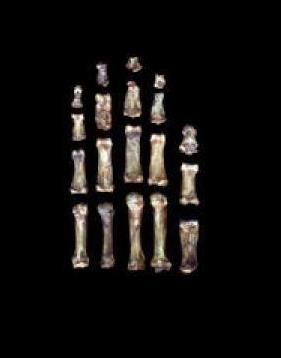
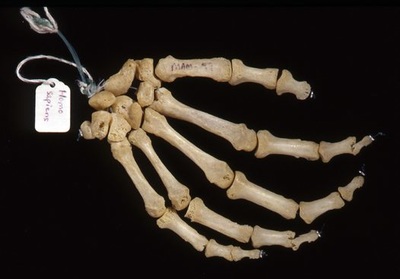
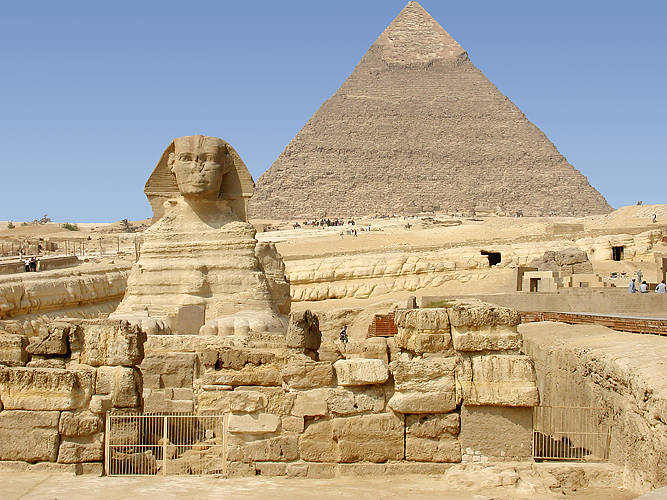
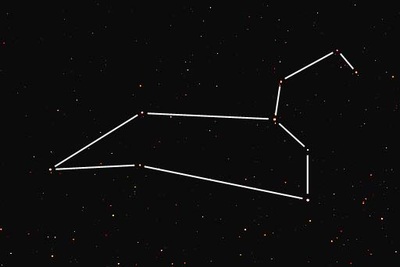
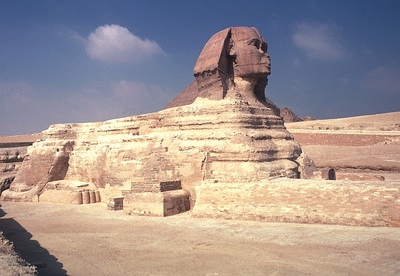
 RSS Feed
RSS Feed
